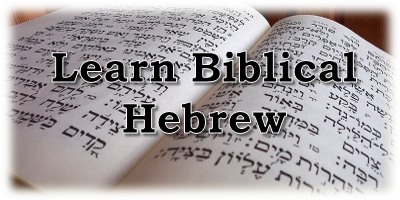Consonants
| א | The "aleph" is the first letter of the Hebrew alephbet. This consonant is silent. |
| ב | The "beyt" is pronounced two different ways. If the letter appears with a "dagesh" in the middle of the letter (בּ), it is pronounced "b" as in ball (This form of the letter is called the "beyt"). If the letter appears without the "dagesh" (ב), it is pronounced "v" as in visit (This form of the letter is called a "veyt"). When the "beyt" is prefixed to a word it means "in" or "with." |
Vowels
| אָ | The qamats. This vowel, which is placed under the consonant, is pronounced "a" as in father. (Note: The aleph here is not part of the vowel, it is simply used here to show the placement of the vowel only) |
| אַ | The patahh. This vowel is also pronounced "a" as in father. |
Notes
Unlike English which is read from left to right, Hebrew is read from right to left. This may sound difficult, but in a very short time you will get used to it.
When sounding out a Hebrew word it will be easier if you remember the Consonant (C) and Vowel (V) patterns. In English the consonants and vowels may be arranged in any order such as in the word "circle" which has the following pattern; C-V-C-C-C-V. Hebrew on the other hand is very consistent in that a vowel almost always follows a consonant, such as in the following words Melek (king) C-V-C-V-C; Meleko (his king) C-V-C-V-C-V and Hamelek (the king) C-V-C-V-C-V-C.
Practice
Vocabulary
| Came (Masc. Verb) | בָּא |
| Father | אָב |
Sentences
| Father Came. | אָב בָּא׃ |



